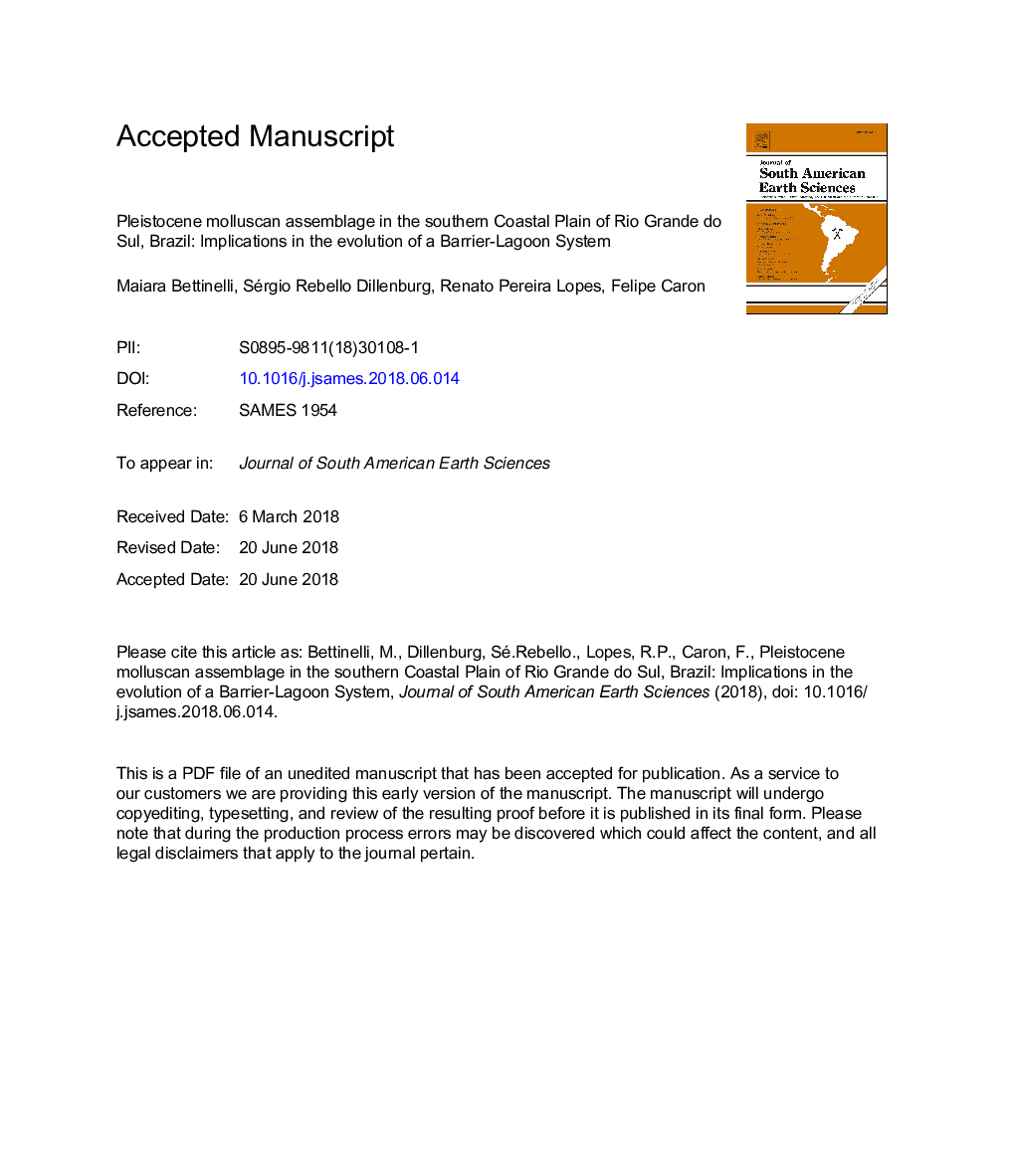| کد مقاله | کد نشریه | سال انتشار | مقاله انگلیسی | نسخه تمام متن |
|---|---|---|---|---|
| 8907583 | 1635124 | 2018 | 53 صفحه PDF | دانلود رایگان |
عنوان انگلیسی مقاله ISI
Pleistocene molluscan assemblage in the southern Coastal Plain of Rio Grande do Sul, Brazil: Implications in the evolution of a Barrier-Lagoon System
ترجمه فارسی عنوان
مونتاژ پلوتوسن مولوسکان در دشت ساحلی جنوبی ریو گراند دو سول، برزیل: تأثیرات در تکامل یک سیستم باربری دریایی
دانلود مقاله + سفارش ترجمه
دانلود مقاله ISI انگلیسی
رایگان برای ایرانیان
موضوعات مرتبط
مهندسی و علوم پایه
علوم زمین و سیارات
علوم زمین و سیاره ای (عمومی)
چکیده انگلیسی
The Barrier-Lagoon System III is the better preserved Pleistocene depositional system in the southern Coastal Plain of the state of Rio Grande do Sul, Brazil. The origin of this unit is correlated to the sea-level highstand of the last interglacial stage, but so far very little is known about the evolution and stratigraphy of this unit due to the scarcity of outcrops. A fossil assemblage consisting of thousands of bivalve and gastropod shells were recovered from drilling holes and SPT (Standard Penetration Test) surveys performed at depths up to 17â¯m on that unit. The characterization of these fossils in addition to the analysis of the sediments and SPT data allowed to interpret the depositional setting of the fossil-bearing sediment as backbarrier deposits representing a retrogradational sequence characterized by lagoon bottom and margin facies superposed by sandy aeolian facies, covered by loess deposits. The fossil assemblage found in the lagoon bottom and margin deposits is dominated by bivalve and gastropod molluscs, mostly characteristic of open marine, shallow (â¤30â¯m) environment, but including some Erodona mactroides and Anomalocardia brasiliana, bivalves typical of lagoon environments. The presence of species that do not currently live in the region suggests the influence of warmer coastal waters during the last interglacial stage. The good degree of preservation of a large part of the molluscan assemblage, with no signs of abrasion, bioerosion or incrustation, indicates short residence time at the sediment-water interface after death and disarticulation, followed by rapid burial below the Taphonomically Active Zone (TAZ). The presence of marine species together with species from low energy mixohaline environments indicates the transport of sediments and marine fauna to the backbarrier, which would have occurred during the transgressive phase of System III evolution. This process could have been related to increased storminess during the last interglacial, which promoted the transportation of large amounts of sediments and shells from the shoreface to the backbarrier through overwash and opening of ephemeral inlet channels.
ناشر
Database: Elsevier - ScienceDirect (ساینس دایرکت)
Journal: Journal of South American Earth Sciences - Volume 86, October 2018, Pages 200-215
Journal: Journal of South American Earth Sciences - Volume 86, October 2018, Pages 200-215
نویسندگان
Maiara Bettinelli, Sérgio Rebello Dillenburg, Renato Pereira Lopes, Felipe Caron,
